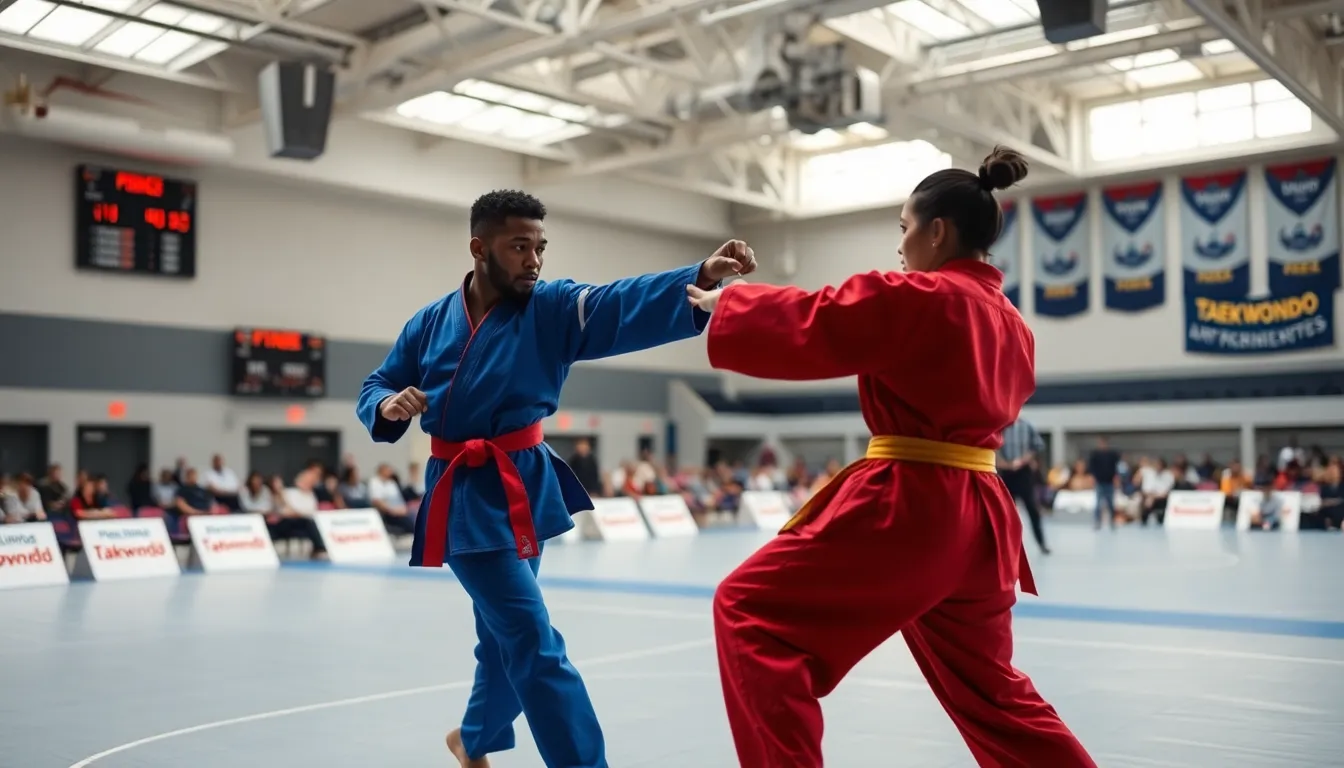Ever thought about stepping into the ring of Taekwondo? Picture this: the adrenaline pumping, the crowd roaring, and your opponent glaring at you like they just saw their ex with a new partner. But hold on. Before you lace up those sparring shoes, let’s dive deep into the world of Taekwondo bouts. This comprehensive guide will spill the beans on everything you need to know, from understanding the rules and types of bouts to sharpening your mental game. It’s time to prepare for battle and unleash your inner martial arts master.
Table of Contents
ToggleUnderstanding Taekwondo Bouts

The Rules and Scoring System
Each Taekwondo bout adheres to a specific set of rules, ensuring fair play while allowing athletes to showcase their skills. Competitors earn points by landing clean, controlled strikes on their opponent’s scoring zones, primarily the torso and head. Points can vary, with head kicks typically scoring more than body shots. Penalties, known as fouls, can also affect a competitor’s performance, reminding everyone that being a good sport matters as much as being a fierce fighter.
Types of Bouts in Taekwondo
Taekwondo bouts come in several flavors. The most common include sparring matches and pre-arranged (or “hyung”) bouts. Sparring focuses on free-form competition, allowing for spontaneity and tactical maneuvers. On the other hand, pre-arranged bouts are more choreographed, emphasizing techniques that highlight an athlete’s skill and precision without the unpredictability of a live opponent.
Preparing for a Taekwondo Bout
Training Regimens and Strategies
Preparation for a Taekwondo bout is no small feat. A well-structured training regimen is essential. Athletes typically balance cardio, strength training, and flexibility exercises. This holistic approach ensures that competitors are in peak physical condition. Plus to physical training, practicing techniques and sparring against varied opponents can sharpen reflexes and enhance adaptability during bouts.
Mental Preparation for Competition
Equally important is the mental aspect of competition. Visualization techniques can help athletes mentally rehearse their moves and strategies. Staying focused and calm under pressure can be the difference between victory and defeat. Many fighters turn to mindfulness practices or meditation to cultivate a laser-sharp focus, reducing nervousness and enhancing performance on the mat.
Analyzing Opponents and Techniques
The Impact of Bouts on Skill Development
Every bout presents an opportunity for growth. An athlete’s performance in a fight can reveal strengths and weaknesses in their technique. Observing opponents closely, analyzing their styles, and learning from each encounter can significantly improve an athlete’s skills. It’s not just about winning: it’s about adapting and evolving as a martial artist.
Learning from Experience: Post-Bout Analysis
After a bout, reflection is crucial. Reviewing video footage helps identify what worked and what didn’t. This post-bout analysis can be insightful, shining a light on areas needing improvement. Athletes who embrace feedback, whether from coaches or self-review, can make substantial progress in their training.
The Role of Technology in Taekwondo Bouts
Innovations in Scoring and Judging
Technology is transforming Taekwondo, especially in scoring and judging. Electronic scoring systems are now commonplace, providing instant feedback and accurate point calculations. Sensors in headgear and chest protectors detect strikes more effectively than traditional methods. These innovations aim to reduce human error and ensure fair outcomes, making each bout more transparent and trustworthy.
Utilizing Data for Performance Improvement
In today’s competitive landscape, data analysis is becoming increasingly pivotal. Athletes now have access to performance metrics that can highlight their strengths and pinpoint weaknesses. Wearable technology can track heart rates and movements, providing insights into athlete performance during training. Using this data effectively allows competitors to fine-tune their training regimens, making informed decisions to enhance their skills.





